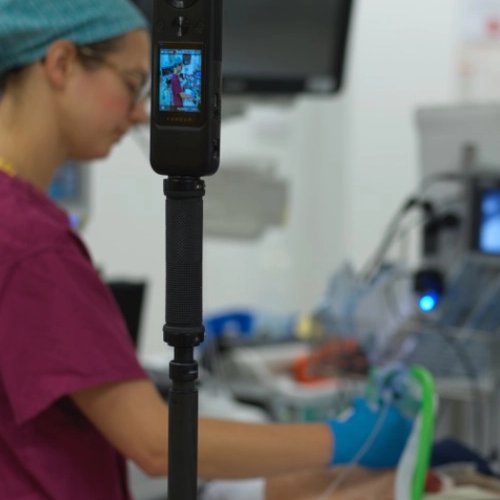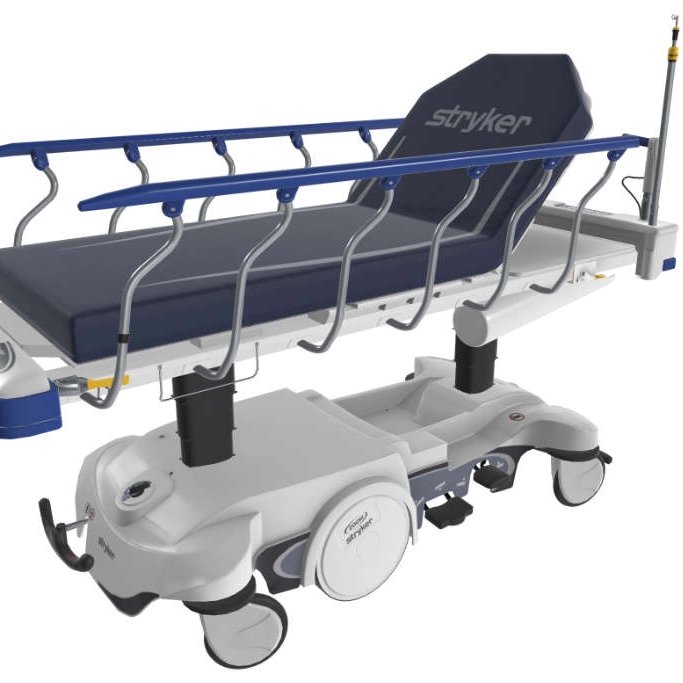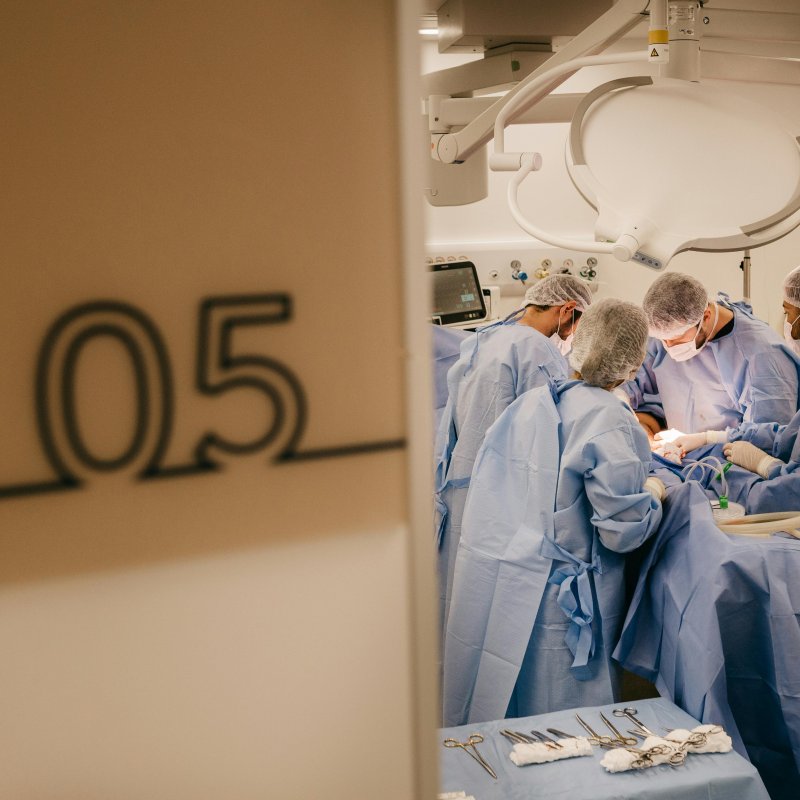Contact Us
+44 20 32897141 / 1 Pickle Mews, London, SW9 0FJ
How Medical VR is Overcoming Barriers to Training in Healthcare
Published
Jul 30, 2024
Tags
The General Medical Council’s ‘Workforce report 2023’ states the UK’s health workforce is expected to grow by 51% by the end of 2036. That's based on the continuation of workforce trends from 2017 to 2022, plus the sustained growth of international medical graduates joining the workforce.
Whilst a twofold growth in the workforce is to be welcomed amid a backdrop of junior doctor strikes and relentless budget constraints, it doesn’t come without its own challenge. Just how are we going to provide high-quality, continuous training for over double the amount of people in our healthcare sector?
How Modern is the Current Medical Training Landscape?
You don’t need us to tell you that sole reliance on traditional methods of medical training is outdated. The military, infrastructure, and even education are three public service sectors getting to grips with more digital and virtual means of working. Yet uptake in the medical sector feels considerably slower.
Granted, the nature of healthcare makes it a trickier plain to navigate. At the end of the day, people's lives are at risk. Yet virtual reality (VR) is fast becoming one of the most plausible ways of ensuring medical training keeps up with the advancements the sector is seeing in its medicines, procedures, and devices. And it’s doing so whilst sustaining – and improving – patient care.
Three Common Barriers to Medical Training
Medical VR solutions mean learners can immerse themselves in a clinical scenario or watch a device being assembled and used remotely. It allows student nurses, paramedics, doctors (the list goes on) to develop core competencies and specialist skills without having to jump over some of the most common barriers to medical training – three of which we’ve outlined below.
1. Clinical staff with experience and availability to train learners
Despite 11 rounds of recent strikes by junior doctors (and subsequent headlines about staff shortages), the number of licensed doctors in the UK is growing. In fact, every one of the last five years has seen more than double the number joining the workforce than who leave. (Just shy of 24k doctors joined in 2022, with around 11k leaving.) With more doctors needing access to continual knowledge and skills training, the pressure is on those with the experience and clinical know-how to do so. Plus, that all-important time.
Fortunately, medical VR training finds a way around these factors. Where availability for clinical leads to train more junior members of staff in-person is limited, the nature of a virtual reality training tool is unlimited. Say an aspiring ENT (ear, nose, throat) surgeon needs training on a new procedural technique, they can watch a 360-degree video experience the procedure to learn it. Building on this VR simulations can enable them to practice specific procedural steps, equipment setup and deployment, or associated medical management algorithms. All without relying on the trainer’s timetable or having to be in the clinical setting themselves.
Medical VR in practice at Liverpool University NHS Foundation Trust
In collaboration with Liverpool University NHS Foundation Trust, we created a VR training solution for epistaxis, a core competency of junior doctors with ENT responsibilities. 360° videos and a fully immersive VR simulation make up the training tool that can now be accessed by the Trust’s workforce.
One learner told us how using the VR training videos ‘a few times’ would make them ‘very confident’ in the skill of nasal packing. Another said it’s ‘as close to practicing in-person as you can be’ – all without demanding the time or resource of an in-person trainer.
Click to explore our work with Liverpool University NHS Foundation Trust.
2. Access to Medical Devices and Specialist Equipment
Opportunity to witness a procedure during training is one thing – but what about practising with the device or equipment needed to perform it? Thanks to our state-of-the-art medical technology (MedTech) sector, the UK’s already turning over around £30bn annually in devices and innovations. MedTechs are manufacturing some of the most advanced equipment we’ll ever see in our lifetime. Yet, getting your hands on these devices to learn how to use them remains few and far between.
As you'd expect, they come with eye-wateringly high price tags. But they also require specialist training to educate users on how to use them, an element that also comes with time, resource, and financial considerations.
Over to our friend, VR, who’s primed to enrich medical device training. By creating a digital twin of a piece of equipment, virtual reality enables the learner to manipulate the instrument exactly as they’d need to in a clinical setting. All without having to be physically in the room of touching the device itself.
Allan McHenry, Assistant Director of Service Delivery (Clinical) at Kent Surrey Sussex Air Ambulance Charity, sums up the advantage of being able to virtually offer equipment-specific training perfectly. He says VR simulations ‘allow a degree of initial orientation training to groups of staff’ – in this case, before they’d get close to the charity’s helicopter. It helps to ‘minimise risk to staff (and machines) and allow staff with the appropriate technology at home to access training’.
The more accessible device training is to those who require it, the quicker and easier it is to empower our healthcare workforce to get the most from the avant-garde technology primed to improve patient care.
Read more about our work with KSS Air Ambulance Charity.
3. Circumstances of the Healthcare Profession
Third and finally, we're not addressing a challenge with the learners, but the conditions they’re training to teach. Whilst hundreds of thousands of routine procedures take place daily, some happen on a more frequent basis. Yet even when a niche set of symptoms for a rare condition present themselves, it’s luck of the draw as to which healthcare professionals are on shift that day to deliver the necessary treatment. Add to this the need for a patient to be willing to have students witness and practise procedures on them, and the opportunity for training can become particularly slim.
The good news is however rare (or common) a surgery or procedure is, a VR replica ensures it’s readily available for learners – no matter if they’re on the rota or catching up on sleep after a nightshift. It also reduces the pressures that come with practising on real-life patients, something fundamental to our recent work with South Yorkshire Primary Care Workforce and Training Hub.
We’ve developed a virtual reality training tool to support the Hub’s student nurses to take cytology samples. Reasons why were two-fold:
1. Cytology screening is usually practised on a part task trainer before a willing female patient. The VR tool eliminates the need to find patients to practice on – nurses can watch, rewind, and revisit the 360° video as many times as they like.
2. Standard cytology sampling doesn’t allow for the trainer to see what the patient is doing inside the task trainer or patient, whereas VR enables this extra degree of visibility.
Learn more about our cytology VR training tool by clicking here.
The Future of Medical Training
Demands on both the NHS and private healthcare will continue to change and evolve, but one thing’s for sure – ensuring the aspiring and current workforce have access to high-quality and relevant training is vital to improving patient outcomes.
Keen to get started with a medical VR training tool? Get in touch!
Most recent posts
Like what you read?
Please get in touch with us.



